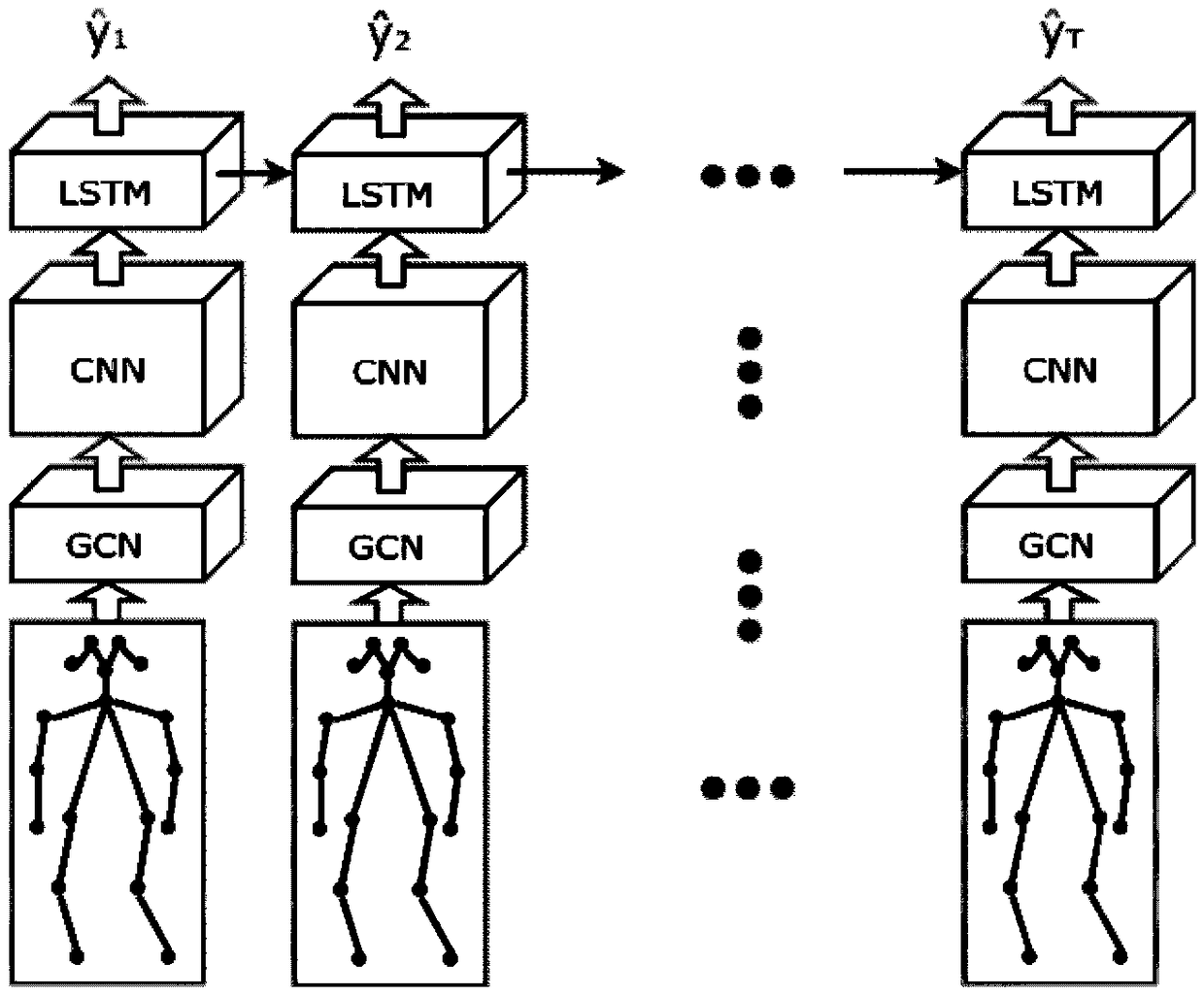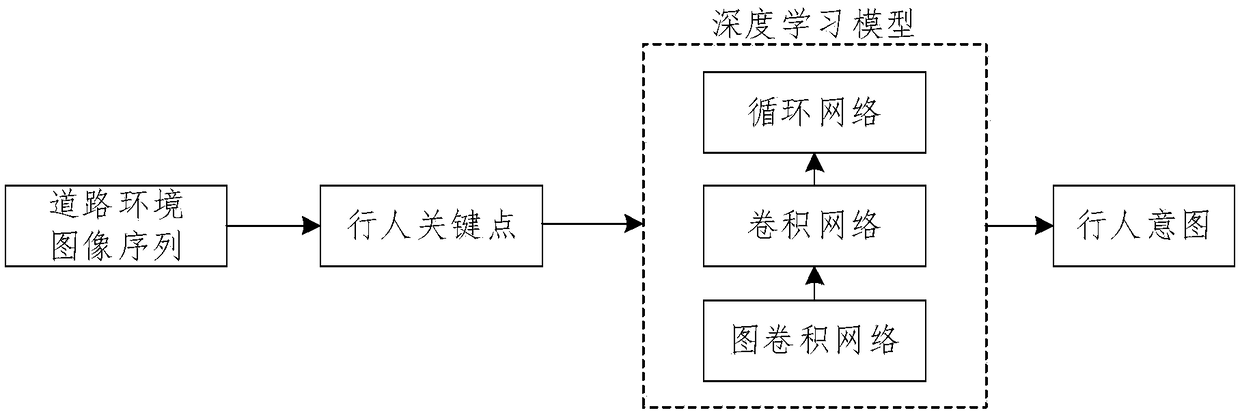Pedestrian intention recognition based on graph convolution
A recognition method and pedestrian technology, applied in character and pattern recognition, instruments, computer parts, etc., can solve the problem of inability to recognize fine-grained intent, and achieve the effect of improving the active safety performance of automobiles, improving understanding ability, and protecting pedestrian safety.
- Summary
- Abstract
- Description
- Claims
- Application Information
AI Technical Summary
Problems solved by technology
Method used
Image
Examples
Embodiment
[0035] Such as Figure 1 to Figure 3 As shown, the video data parameter collected by the forward-looking camera used in the present invention is 1280×720@60FPS, and the video frame is a color image, including RGB three-channel color information, represented by a tensor of (1280,720,3) dimensions, in the tensor Each element is an integer, and the value range is [0,255];
[0036] Apply the Mask RCNN method in the paper to extract the key point information of the human body from the video frame image. The identified key points of the human body are as follows: figure 1 As shown, there are 18 key points in total, namely nose, neck, left eye, right eye, left ear, right ear, left shoulder, right button, left elbow, right elbow, left wrist, right wrist, left hip, right hip, left knee, Right knee, left ankle and right ankle; key point information includes two-dimensional coordinate information and recognition accuracy of each key point, each key point is represented by (x, y, c), whe...
PUM
 Login to View More
Login to View More Abstract
Description
Claims
Application Information
 Login to View More
Login to View More - R&D
- Intellectual Property
- Life Sciences
- Materials
- Tech Scout
- Unparalleled Data Quality
- Higher Quality Content
- 60% Fewer Hallucinations
Browse by: Latest US Patents, China's latest patents, Technical Efficacy Thesaurus, Application Domain, Technology Topic, Popular Technical Reports.
© 2025 PatSnap. All rights reserved.Legal|Privacy policy|Modern Slavery Act Transparency Statement|Sitemap|About US| Contact US: help@patsnap.com



